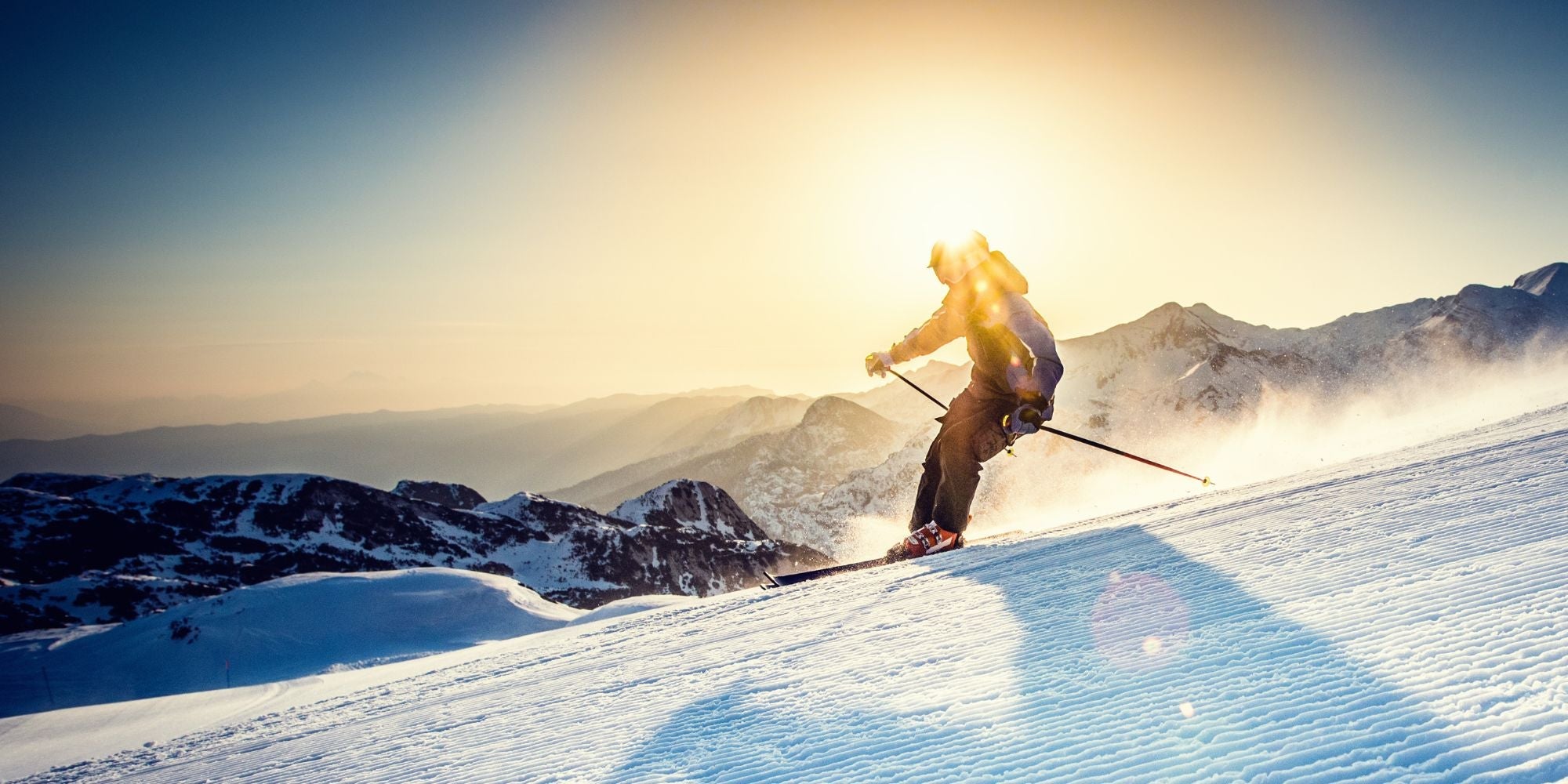
High altitude skiing usually comes with some of the best views and powder, but also with the risk of feeling uncomfortable or unwell. To help you avoid any misery on your trip, we’ll go over how to prepare for high altitude skiing backed by our decade of elevation experience.
In this comprehensive guide we'll walk you through essential preparation steps for high altitude skiing and high altitude vacationing, but first we’ll explore the challenges at high altitude.
Yes, you can get altitude sickness while high-altitude skiing.
Travel Medicine Consultations explain that altitude sickness can start as low as 4,000 feet.³ Each increased level of elevation can significantly increase your risks and severity of symptoms.
Altitude sickness is one of the biggest concerns when venturing to ski at high altitudes.
Altitude sickness is caused by the lower oxygen levels in the air compared to sea level. This can have a significant impact on your body in a negative way, including headaches, performance problems, and breathing issues. It can be debilitating to your skiing experience.
Altitude Sickness symptoms for skiers may include:
You want to monitor yourself closely on a ski trip during the first 6-24 hours, where altitude sickness is most likely to hit. Follow our steps below on how to best prepare for high altitude skiing.
According to the Society of Mountain Medicine, high altitude starts at 4900 feet. Based on this height and higher, many ski resorts surpass this threshold.
States with high-altitude ski resorts:
Take proper precautions when visiting ski resorts in these states, or anywhere that’s considered high altitude.
Skiing in high-altitude regions requires careful preparation, as your trip can have a setback from the struggle of lower oxygen.
As a Colorado company with over a decade of elevation experience, we’ll share with you the best steps to take in preparation to reduce the high altitude effects.
6 Steps How To Prepare For High Altitude Skiing:
High altitudes expose your body to increased oxidative stress, which can be problematic for skiing.⁵ One high-altitude study found that glutathione was depleted by 45% in these conditions, which is known as being the body’s master antioxidant.⁶
In conclusion, how you prepare for high altitude skiing involves boosting antioxidants, gradual acclimatization, prioritizing sleep, proper hydration, cautious alcohol consumption, and limiting strenuous activity. Make your ski trip much more enjoyable on and off the slopes!

Unleash the power of antioxidants to support your mountain trip with Zaca. These chewables elevate your skiing, outdoor adventures, and high altitude trips by helping you to bounce back faster. Packed with essential nutrients to replenish, rehydrate, and recover faster. No need for water or cumbersome pills – simply eat 2-4 berry flavored chewables to experience the immediate benefits. Try Zaca’s chewable supplement today to fuel your body for peak performance in high altitudes.
SOURCES:
1. USA: highest ski resorts
https://www.skiresort.info/ski-resorts/usa/sorted/mountain-altitude/
2. Oxygen Levels at Altitude
https://wildsafe.org/resources/ask-the-experts/altitude-safety-101/oxygen-levels/
3. High Altitude Illness
https://www.travelsurenyc.com/high-altitude-illness/
4. High Altitude Oxygenation
https://www.ncbi.nlm.nih.gov/books/NBK539701/
5. High altitude and oxidative stress
https://pubmed.ncbi.nlm.nih.gov/17482529/
6. Effect of high altitude (7,620 m) exposure on glutathione
https://pubmed.ncbi.nlm.nih.gov/11320641/
7. Oxidative Stress and Diseases Associated with High-Altitude Exposure
https://www.ncbi.nlm.nih.gov/pmc/articles/PMC8868315/
8. Sleep: The Secret Ingredient of Injury Recovery
https://www.orthocarolina.com/media/sleep-the-secret-ingredient-of-injury-recovery
9. The Importance Of Drinking Water At High Altitude
https://summitoxygen.net/drinking-at-high-altitude/
10. Effects of Alcohol
https://www.ahajournals.org/doi/full/10.1161/01.HYP.29.6.1278#
11. Tips For Reducing The High Altitude Effects On Your Ski Vacation
https://www.ski.com/blog/5-tips-for-reducing-the-high-altitude-effects-on-your-ski-vacation/
Copy the coupon code & use it at checkout